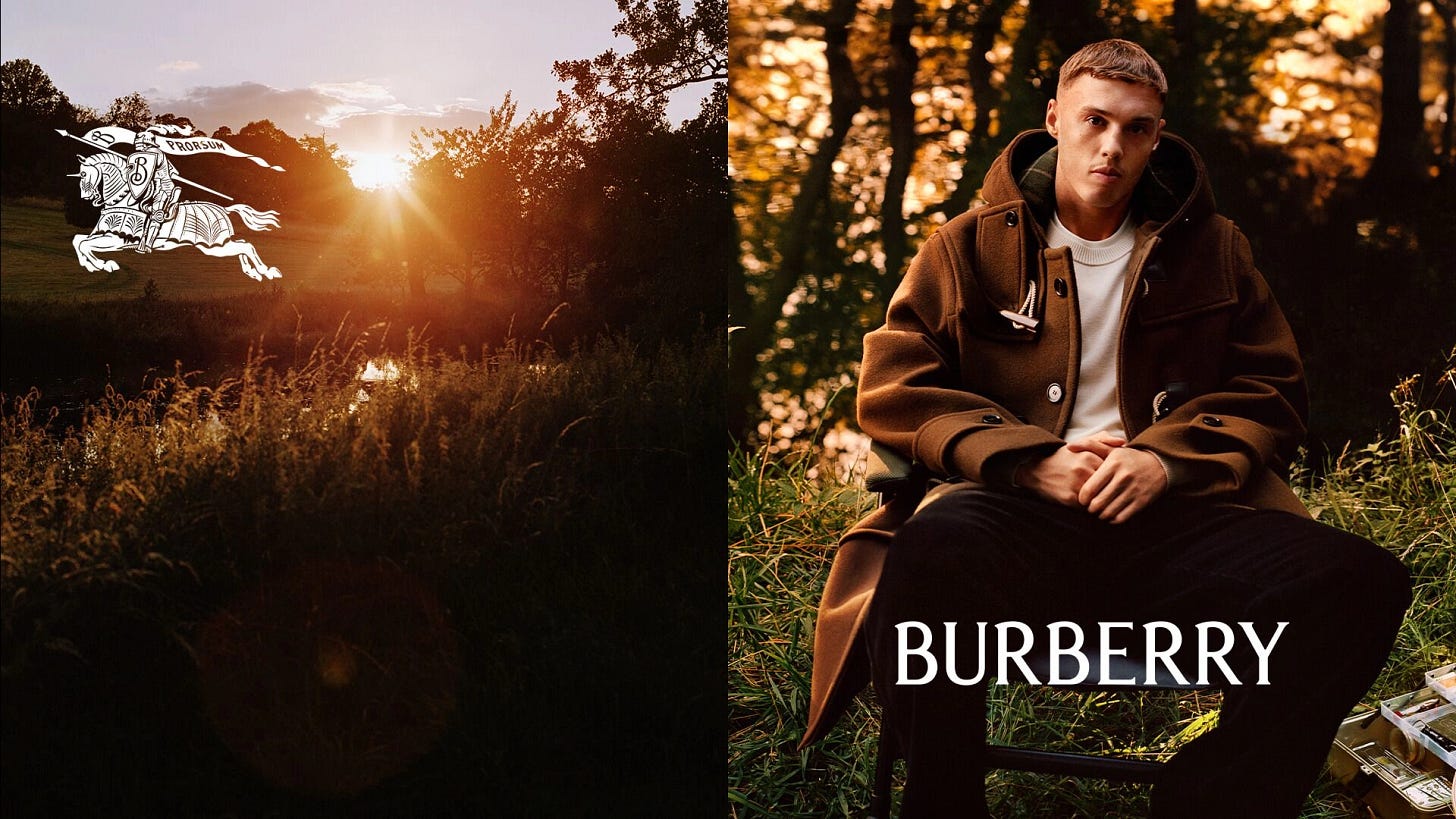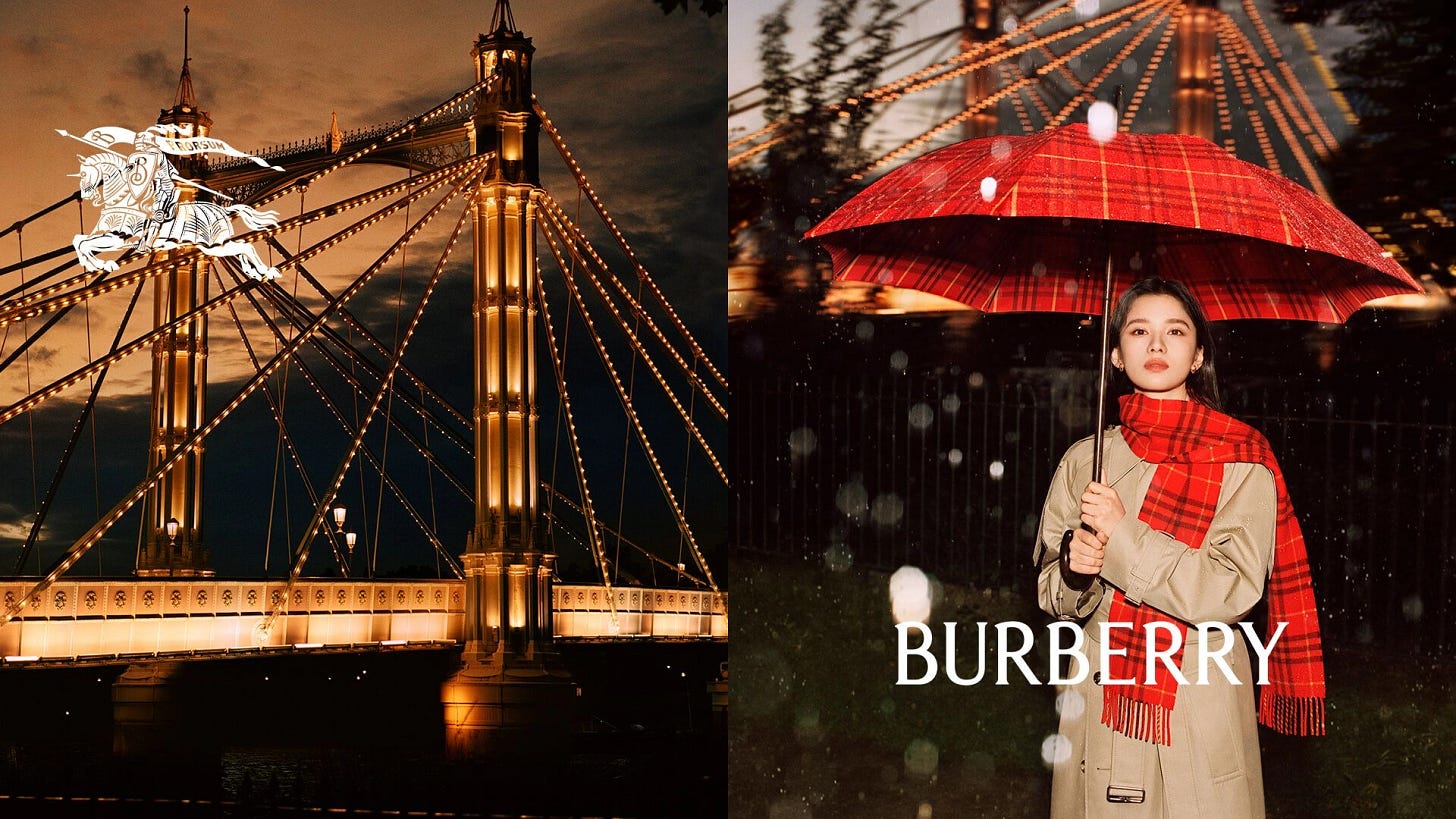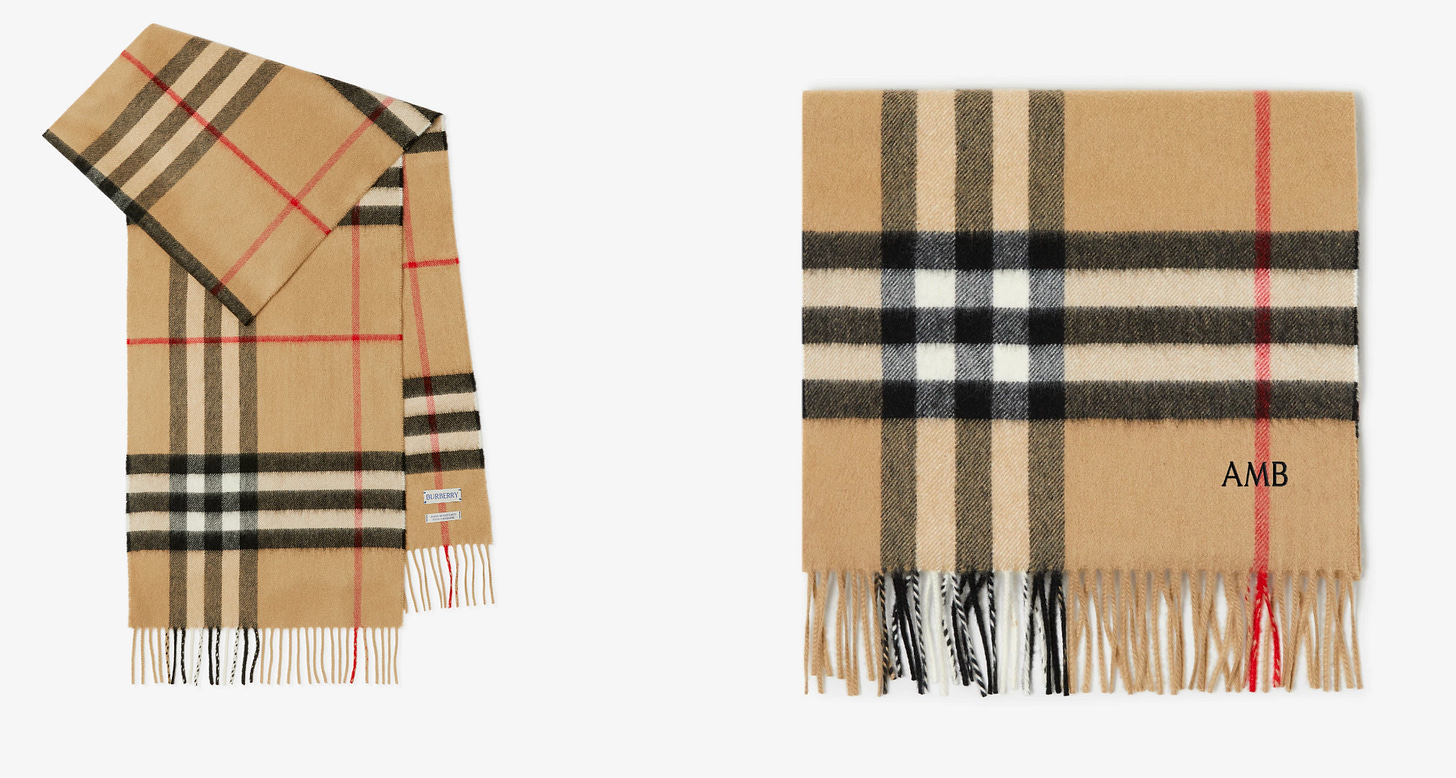Back in July, I wrote about Burberry’s less-than-powerful rebrand. They skipped the story, I argued. With the launch of their new logo and campaign, they missed an opportunity to position themselves with a modern narrative. Instead, they put forward banal platitudes about britishness and made vague, non-specific appeals to their history. I recommended that the brand dig through archives to find a big, powerful story to say something pointed, and to tie that pointed “thing” or idea to a hero product.
“The brand made outwear comfortable, stylish, and beautiful way before gorp-core (yuck!!!) was a thing,” I wrote (mad, passionate in the July heat.)
“Founded in 1856, Burberry first became known for its fabric gabardine, a weatherproof material that became the choice for polar explorers, aviators, and soldiers. Right there, already, more of a story than ‘Britishness’ alone.”
With their new campaign, “It’s Always Burberry Weather” the brand, this fall, has finally unveiled a story worthy of its rebrand, borrowing inspiration from their genesis to craft a modern story. They found the slogan in the archive.
I am delighted! This always works, especially with the right firm and creative director at the helm. As example, check the iconic rebrand of L’eggs, an American Luxury brand, a project led by Family Office and Cami Téllez. Modern. Sexy. True.
“Our ‘It’s Always Burberry Weather’ campaign celebrates our enduring legacy as an outerwear pioneer,” Burberry said of its new-old story. The beautiful campaign was shot by famed photographer Alasdair McLellan and led by the creative studio Frosty.
”Captured across London and the British countryside, settings rooted in our history and the outdoors, the campaign comprises a series of warm and humorous vignettes and portraits of a stellar cast.”
The new CEO, Joshua Schulman, tasked with turning the slump in sales, wrote that leading with outerwear is part of Burberry’s new strategic plan. The product focus will, “Celebrate iconic brand codes with recognisable brand signifiers.”
Louis Vuitton, once not considered luxury at all, or as Anna Wintour once put it, reminded people of airports, did something similar to achieve a new luxury status. Along with a big idea about celebrating adventure, the brand hero’d its travel trunks in glossy campaigns.
In doing so, the brand tied its story to a specific product, the one that most obviously represented what they did best, or how they want to be “known.” Tech companies do this all of the time. Look at Meta, with their thick-framed photo-capturing glasses. Or, Apple with its Vision Pro.
It’s smart that Burberry picked a product at a relatively more accessible price point because that way it’s more likely to become a signifier, a portable, everywhere earned marketing sign. What is a better advertisement than a chic woman whisking through the city wearing the iconic checkered scarf? This is the brand’s version of Prada’s black nylon bag. Or a Cartier Tank. A new feature allows shoppers to try on scarves through a digital mechanism. Not my thing, but I appreciate how far they are “leaning” into this.
I believe the campaign is going to work. It’s consistent. It’s everywhere. OOH, social, digital. Plus, the brand showed up recently on @databutmakeitfashion. What greater sign is there?
It worked on me.
I know what I want for Christmas!













